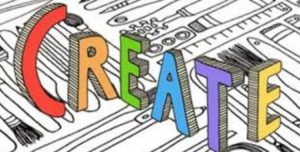02 Module Creation Workflow is a class in how to make a module for the free Bible Program theWord.
Deciding if a work can be put into a module.
As I mentioned before, basically you can put any kind of work into a tw module for personal use. Probably if you download a commercial work without paying for it, that is illegal and immoral. But otherwise, you probably can use anything for personal use. But be careful about having commercial works in your library. I have some that I have, but I always name them with (c) first in the filename to remind me that I cannot post or give away those works.
More Articles from this Category
- Using the Commentary Template
- Topic Formatting issues revisited
- Topic formatting Issues
- theWord hyperlink creation in theWord
- The End all of Text Manipulators
- Simple Bible Reader
Reviewing what do you have to work with
Let me be concise here. You want to have your source material in the best format possible. For me as a module creator, this comes in the following ranking:

Have you ever eaten Fried Ice Cream! Donate! It is delicious, like apple pie with vanilla ice cream on top. But you know that you cannot have what is good without somebody paying for it. If you have enjoyed things on my website, please consider helping me out on the expenses and keeping it on the Internet. Can you consider at least a one time donation to this ministry of $10 or $20 dollars? I have a monthly total of about 96 gigabytes total being downloaded monthly from all of my websites. Be a blessing to me and donate any amount. It would be really great if you could gift me and my wife (she wants oa fried ice cream too) this money so that we could enjoy eating out at least once in a while. (I pay the expenses for these sites out of our living expenses.) God will richly bless you and repay you for your generosity. 1 Timothy 5:18 For the scripture saith, Thou shalt not muzzle the ox that treadeth out the corn. And, The labourer is worthy of his reward. If you received some value from my websites, consider at least a small donation. A big donation would really be nice, too, though.
---->>>>Donate to David Cox Ministries.<<<<----
They deep freeze the ice cream ball, and coat it with batter only a few seconds before they deep fry it, and then only fry it for a few seconds.
- A Microsoft Word, RTF, or some other word processor format.
- An HTML file (URL on the Internet).
- a very short PDF file that is not images.
- other formats.
Note that there is a tremendous amount of library works (many in the public domain) that is available through places like Google books, archive.org, and other places. Although the selection is great, converting those works is next to impossible, or if possible, you will spend a tremendous amount of time and energy in converting one work, and you should really evaluate if it is worth it. As someone told me once when I was single and trying to “fish” for a popular girl everybody else wanted, “there are a lot of other ones out there that are easier and really in the end, better or just as good.” My point is to not waste all your time and energy in something that once done, is not that profitable.
Next, you need to make sure you can copy and paste from one source to a tw module. Note that pdfs don’t work well, and some are simply impossible to select, copy, and paste because their creation is specifically made to avoid people from doing that. Beware of why they are doing that. If it is because it is copyrighted, then leave it alone. If for some other reason, you might want to use it anyway. You will have to use an OCR program to read the screen like ABBY Screenshot Reader which I find is excellent. (But doing a book that way is extremely time consuming and laborious.)
What you will need to pay attention to is if there are line feeds at the end of each line, which is a pain to straighten out.
TIP: A work with a lot of hyperlinks in it.
I get around this by using anyone of several ways. I call this scrapping the formatting from the text. Basically, you need to strip the formatting from the text. A good example of this iswikipedia.org. If you copy material out of there,
usually they have a lot of hyperlinks that I don’t want.
1) Pasting into some field that doesn’t accept hyperlinks or formatting.
You can copy the text, open the module properties dialog and insert the text into a field there, and select and copy, and then delete (control X) and paste it into the module’s content. The easiest way to do this is to open your topic
name for the topic, for example, I use a “dummy module” that I named delete. I know that if it gets deleted there is nothing important in it. It has usually several topics. So one of them is named “delete”. I open two book modules,
and one of them is the module I am making and the other is the “delete” module. Click on it, and then press CTRL+N, and it will allow you to edit the topic title. Control A selects all, then paste your text into there, and then control
+A again, then press Esc and cancel. Then jump back to your module you are creating, and then insert it, and I have scrapped the formatting.
2) Pasting into MS Word or Open Office as unformatted text.
If you have Microsoft Word or Open Office Write open, you can use their paste unformatted text function to scrape the formatting. Using Open Office, it is like 3-4 keystrokes so I usually don’t want to copy over a work with 30 chapters scrapping each chapter that way. You can write macros in these programs to do that, but again, using theWord, you can do it easier and faster.
Make the table of Contents, then the topics, then populate the topics.
In general, the easiest way to make a module is to go to your work and get the table of contents. A lot of works don’t have them, and I go through it and create a table of contents by scanning and copying and pasting chapter
titles into my table of Contents. Usually, I name my table of contents topic in my modules with the author and name of the work. The first thing I add is the same into the top of the Contents topic. If you search your library for a
word in the title but don’t search topics, you might never hit that work, so you want somewhere at least one place, where the author and the title of the work appear in a topic content.
Once you have the chapters, I massage them a little bit.
TIP: Convert Chapter numbers to Arabic numbers.
Example: XL. Chapter Title
This kind of chapter number is laborious for most people to understand if you just put 40. Chapter Title, it makes things a lot easier on everybody.
TIP: Remove “Chapter” from the Chapter Title.
Example: Chapter 1. — Chapter Title
In theWord, we have little “real estate” to show the chapter title. In this example above, the actual first letter of the title is like 14 characters beyond the beginning. You do not need all of that. Shorten things to the minimum.
Example: 1. Chapter Title
This format has the actual chapter title beginning at position 3 characters from the beginning.
TIP: DON’T YELL AT EVERYBODY ALL THE TIME!
In computer-ease (computer stuff), you should never make everything all caps except when it is something very important, and usually, the more words you include, the less important it becomes. A whole paragraph in caps is hard to read. So I hit the “Insert” key near the keypad of my keyboard, and that puts me into overwrite mode and I just type what I see, and quickly I can type over the uppercase with normal type.
FASTWORK TIP: How to make a lot of Topics fast
What I do if I have a work with say 35 chapters, I copy the table of contents from my source first. I put it into the table of contents topic in my module. From there, I go through and remove the “CHAPTER” from each line, I make each line in Arabic numerals, and then make sure each line is lower case, and abbreviate them if they are too long.
Next, I copy that to the Windows clipboard, and press Ctrl N. This will bring up the tw dialog box to make a new topic, prompting for the title. I press ctrl v to insert the title into that box. Note that tw will only insert up to the carriage return, so if you have a list of 1-30 chapters, only the first line is inserted. If it is the title, it is that. So make sure you start your selection with the first chapter before copying to the click board. Don’t worry about the rest.
When you press enter, your new topic will be entered.
Now click in the content section and press control V again. Your enter selection is inserted. Now go to the top row, down arrow on next line, and select the second chapter to the end. Control X it. That will delete it to the clipboard.
Ctrl N and Ctrl V and enter to make a new topic, and insert the title, topic. Click in the contents of this one and again reselect starting with the next chapter.
Even though you don’t believe me maybe, try it. If you are a touch typist, not a hunt and peck one, you can quickly run through all of the chapters of even large books. When you go back and copy content into each chapter, note that if you don’t want that chapter title (maybe each chapter has a better formatted one, or you don’t want two, then when you click into the content section, press control A to select all before control v. Now your title will be erased before the new content is entered into the work.

